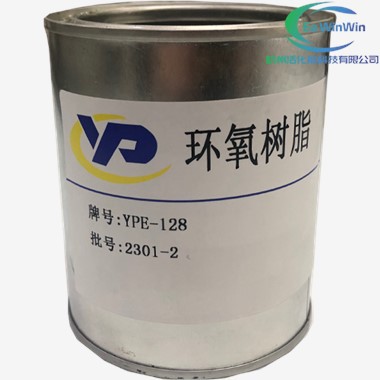
Pcb Epoxy Resin
Product Description
Itemname:YPE-011
Epoxy resin finds its application in a wide range of industries, primarily for its excellent anticorrosive properties. This versatile material is extensively used in the production of anticorrosive coatings for various purposes. It proves particularly effective in safeguarding ships, containers, construction machinery, and coil steel from the detrimental effects of corrosion.
The exceptional properties of epoxy resin make it a favored choice for anticorrosive coatings. Its ability to form a protective barrier against moisture and other corrosive elements ensures the longevity and durability of the coated surfaces. This makes it an indispensable component in the maritime industry, where ships and containers often face the harsh conditions of seawater.
Construction machinery, which is exposed to diverse environmental factors and corrosive substances, greatly benefits from the application of epoxy resin-based coatings. By providing a robust shield against corrosion, these coatings help maintain the structural integrity and prolong the lifespan of machinery, thus reducing maintenance costs and downtime.
Moreover, epoxy resin is extensively employed in coil steel applications, as it effectively prevents rust formation. Coil steel, which is widely used in various manufacturing processes, is vulnerable to corrosion due to moisture, humidity, and other corrosive agents. By applying epoxy resin coatings, the coil steel is protected, ensuring its quality and performance are upheld.
Overall, epoxy resin's use in anticorrosive coatings proves indispensable in a variety of industries. Its protective properties are essential for preserving the integrity and extending the service life of ships, containers, construction machinery, and coil steel. By incorporating epoxy resin into these applications, companies can enhance their product reliability while minimizing maintenance costs.
CAS:61788-97-4


Packing Specification
Packed In Plastic Box , 20kg/drum-240kg/drum
Implementation Standard
GB/T19001-2016//ISO9001:2015
GB/T24001-2016//ISO14001:2015
GB/T28001-2011//OHSAS18001:2007
GB/T23331-2012//ISO50001:2011//RB/T 114-2014
Parameter Comparison Table
|
Code |
Appearance |
Epoxy equivalent(g/Eq) |
Epoxide number(eq/100g) |
Softening point(℃) |
Solubility Viscosity(CPS/25℃) |
(Color) Gardner#≤ |
|
YPE-011 |
White or yellowish flake solid |
450~500 |
0.200~0.222 |
60~70 |
D~F |
1 |
|
YPE-011T |
White or yellowish flake solid |
450~500 |
0.200~0.222 |
65~75 |
D~F |
1 |
|
YPE-011P |
White or yellowish flake solid |
450~500 |
0.200~0.222 |
60~70 |
D~F |
1 |
|
YPE-011H |
White or yellowish flake solid |
500~550 |
0.182~0.200 |
65~75 |
E~G |
1 |
Epoxy resin is a material that performs various functions in the manufacturing process of PCB for Internet of Things products. Here's more on the important role it plays in iot manufacturing.
Adjust to meet specific requirements
Manufacturers can choose special epoxies or change specific epoxy characteristics to meet specific performance or manufacturing requirements. For example, additives can make epoxy resins harder or thicker, making them best suited for use as conformal coatings. Here are some other ways to adjust the characteristics of a particular epoxy resin
Electrical and thermal conductivity
Using silver as a filler for one - or two-component epoxies can produce conductive adhesives instead of welding. Conductive binders are either isotropic or anisotropic. Those in the first category are conductive in all directions. Anisotropic binders, however, conduct electricity in only one direction. They are sometimes used to glue antenna structures in radio frequency identification (RFID) products.
Epoxy also helps with heat conduction. One option is to use this adhesive to connect two surfaces and transfer heat to the cooler surface. However, since most epoxies lack adequate intrinsic thermal management capabilities, fillers make up for the shortfall. Copper, boron nitride and aluminum powder significantly improved the heat transfer performance.
Extreme temperature tolerance
Additives and hardeners are also mixed with the epoxy during and before curing to make the adhesive resistant to low temperatures. In contrast, the epoxy resins that exist can withstand temperatures higher than the approximately 300 degrees Fahrenheit of non-extreme heat-resistant types.
Low release gas
Epoxy resins used in the aerospace industry must be of a low gas release type. Due to the vacuum of space, degassing causes volatile compounds to be released around the spacecraft.
NASA uses two test parameters to ensure that the epoxy meets degassing requirements: total mass loss (TML) and collected Volatile Condensable material (CVCM). More specifically, NASA standards specify less than 1% TML and less than 0.1% CVCM for epoxy adhesives or potting compounds.
Companies that supply low-release, high-purity epoxies first test these products in specialized chambers under strict conditions. Then they publish the results and cater to customers who want low gas release adhesives.
QUALITY CONTROL
We have QC character continue to be on the manufacturing strains do to the inspection.All merchandise have to have been inspected earlier than delivery.we do inline inspection and last inspection.
1.All uncooked cloth checked as soon as it arrive our factory.
2.All portions and emblem and all small print checked at some point of production.
3.All packing important points checked for the duration of production.
4.All manufacturing first-rate and packing checked on closing inspection after finished.
Our Service
1.More Professional provider in Packaging and printing merchandise exporting field
2.Better manufacture ability
3.Various price time per
Hot Tags: pcb epoxy resin, China pcb epoxy resin manufacturers, suppliers, factory
Previous
No InformationYou Might Also Like
Send Inquiry










